HOW TO GROW AND PREPARE DILL
Dill is so much fun to grow! It has a refreshing aroma with notes of grass, anise, and citrus. The flavor adds a mild sweetness and subtle tanginess that adds a refreshing and aromatic touch to dishes.
![]()

Dill is a spectacular herb. With its unforgettable aroma and unique taste profile, fresh dill finds its way into many of my summer dishes. I really enjoy growing and preparing fresh herbs.
In the realm of culinary herbs, a hidden gem has the power to elevate dishes with its unique flavor and aromatic charm. Meet fresh dill, an herb with feathery fronds and a captivating fragrance that adds a touch of freshness to any recipe. Picture yourself in a sun-drenched herb garden, surrounded by the delicate allure of Dill. As you pluck a sprig, its subtle notes of grass, anise, and citrus fill the air, transporting you to a culinary delight.
Fresh dill possesses an enchanting quality that dances on the taste buds. Its vibrant and herbaceous flavor offers a delightful blend of mild sweetness and subtle tanginess. Each bite leaves a refreshing and lingering sensation that enhances various dishes. As you explore the world of fresh dill, you’ll discover the versatility and charm it brings to the culinary realm—an enchanting and indispensable herb.
You can see my Spring garden layout (including basil), seed choices, and each planting here in the Garden to Table section.

Reasons You’ll Love Growing Dill
Here are a few – we use fresh dill in our Chickpea Sandwich with Avocado, Fresh Dill, and Tahini
-
-
- Unique Flavor Profile – Fresh Dill boasts a distinctive flavor that is hard to replicate. Its combination of grassy, anise-like, and citrusy notes adds a refreshing and complex taste to your dishes.
- Versatility in the Kitchen – Fresh Dill complements various cuisines and dishes. Whether preparing seafood, salads, sauces, or soups, Dill can enhance the flavors and bring a vibrant touch to your creations.
- Aromatic Delight – The fragrant aroma of fresh Dill is truly captivating. It has the power to awaken the senses and elevate the overall dining experience.
- Nutritional Benefits – Fresh Dill is a flavorful herb and a source of essential nutrients. It contains vitamins A and C and minerals like calcium and iron, providing flavor and nourishment.
- Culinary and Medicinal History – Dill has a rich history, dating back to ancient times. It has been used for its culinary properties and potential health benefits, including digestion support and antioxidant properties.
-
Fresh dill has an irresistible allure that captures the hearts of food enthusiasts. Its unique flavor profile sets it apart from other herbs, offering a harmonious blend of grassy freshness, hints of anise, and a subtle citrus tang. This combination creates a truly versatile herb that can elevate a wide range of dishes. Whether you’re preparing seafood, salads, sauces, or soups, fresh dill has the power to enhance the flavors and bring a vibrant touch to your creations. Beyond its flavor, the aromatic delight of fresh dill adds an extra layer of sensory pleasure to your culinary experience. Its refreshing scent awakens the senses and entices the appetite, making it a beloved herb among chefs and home cooks alike.
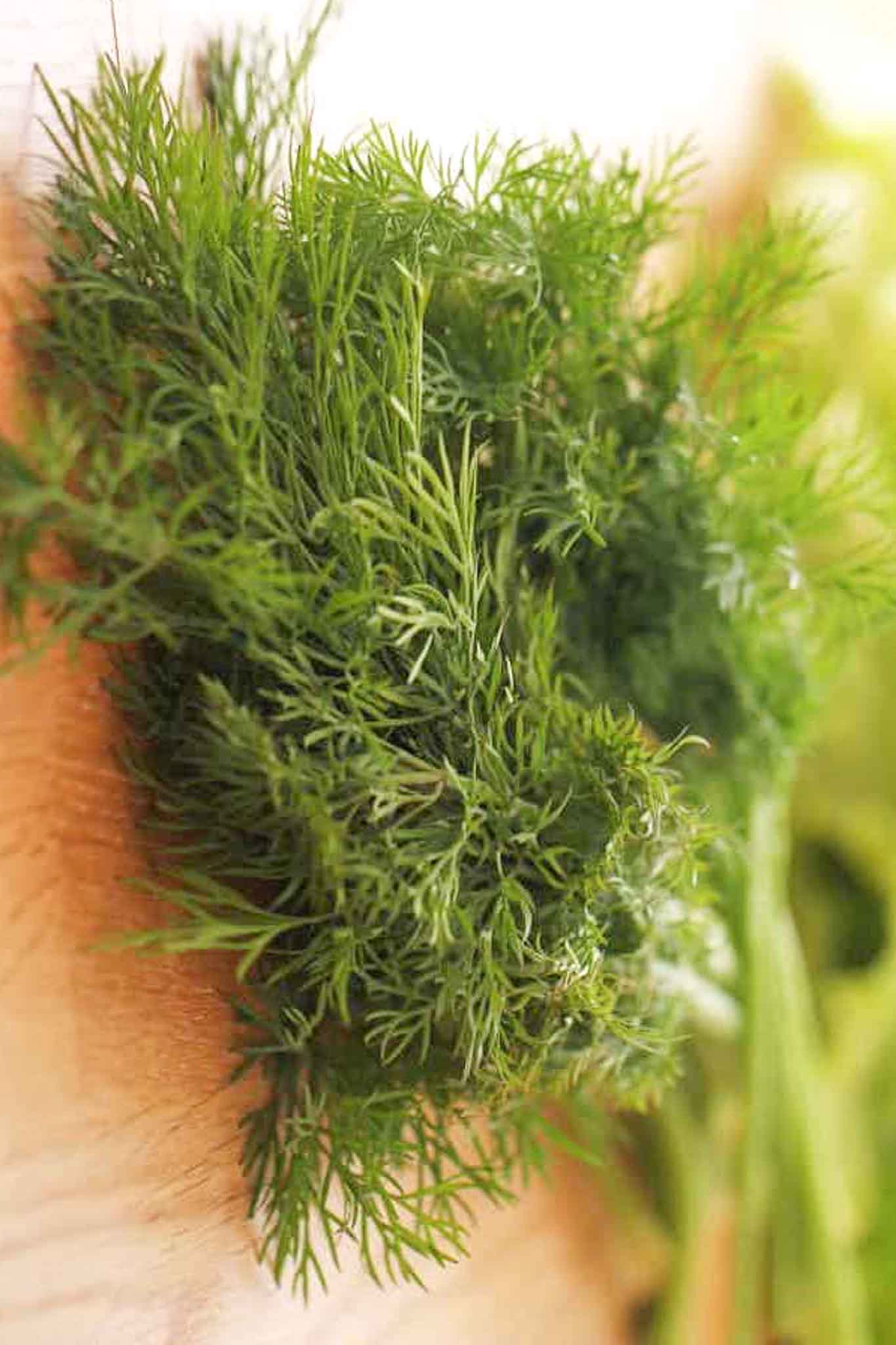
Popular Varieties of Dill
Here are some easy-to-grow varieties of dill.
-
- Bouquet Dill – The most common variety of Dill, known for its tall and feathery fronds. It has a robust flavor and is widely used in culinary and pickling applications.
- Fernleaf Dill – Fern leaf dill is a compact variety perfect for container gardening with its delicate and finely divided leaves. It has a milder flavor than bouquet dill but adds a delightful touch to dishes.
- Mammoth Dill – As the name suggests, this dill variety features prominent, broad leaves and is known for its strong flavor. It is often preferred for pickling due to its robust taste.
Learning how to grow and prepare dill starts with knowing its varieties. Whether you prefer the towering beauty of Bouquet Dill, the compact elegance of Fernleaf Dill, or the robust taste of Mammoth Dill, these varieties offer diverse options to suit your culinary needs.
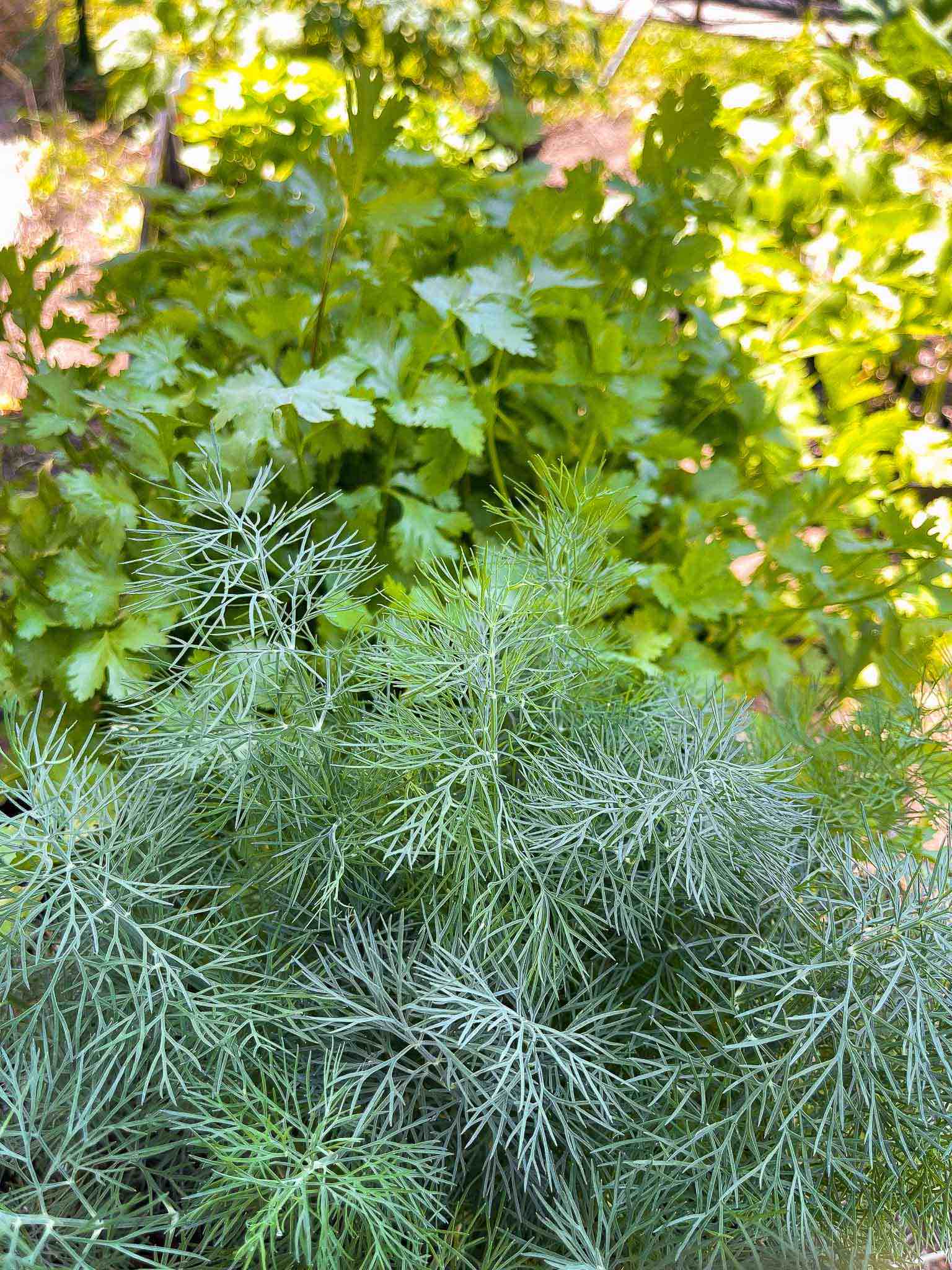
How to Grow Dill
Dill is easy and fun to grow. You can grow it inside, outside, in a container, or in your garden.
-
- Choose the Right Location – Select a sunny spot in your garden or a container with well-draining soil to grow dill successfully.
- Planting Dill Seeds – Sow dill seeds directly into the soil, spacing them about 12 inches apart. Lightly cover the seeds with soil and water gently.
- Provide Adequate Watering – Keep the soil consistently moist but avoid overwatering, as dill prefers slightly dry conditions.
- Harvesting Dill – Once the plant reaches a height of about 8-12 inches, you can start harvesting dill leaves. Snip off the fronds as needed, leaving some to continue growing.
- Tips for Success – Dill is a relatively low-maintenance herb. However, it can attract beneficial insects, such as pollinators, so avoid using chemical pesticides.
Learning to grow dill successfully is straightforward. Select a sunny location in your garden to grow dill successfully, or use a container with well-draining soil. Sow the dill seeds directly into the soil, spacing them about 12 inches apart. Lightly cover the seeds with soil and water gently. Dill prefers slightly dry conditions, so make sure to keep the soil consistently moist without overwatering. Once the plants reach a height of about 8-12 inches, you can start harvesting the fronds as needed. Snip off the dill leaves, leaving some to continue growing. Dill is a relatively low-maintenance herb that can attract beneficial insects, such as pollinators, to your garden. Avoid using chemical pesticides to maintain a healthy and thriving dill plant.

Dill Pests and Bugs
Dill can be susceptible to certain pests and bugs.
-
- Aphids – These tiny insects can infest dill plants, causing damage. Control aphids using insecticidal soap or spraying a mixture of water and dish soap directly on the affected areas.
- Caterpillars – Some caterpillar species, like the parsley worm, may feed on dill leaves. Handpick or use organic caterpillar control methods to manage the infestation.
- Slugs and Snails – These pests can chew on dill leaves, leaving behind holes. To protect your dill plants, use organic slug and snail control methods, such as diatomaceous earth or beer traps.
To successfully grow and prepare dill, you ‘ll need to watch out for pests and bugs. While dill is generally a resilient herb, it may encounter a few pests and bugs that can cause damage. Aphids, tiny insects, can infest dill plants and weaken their growth. Control aphids using organic insecticidal soap or spraying a mixture of water and chemical free dish soap directly on the affected areas. Caterpillars like the parsley worm may also feed on dill leaves. Handpick them or use organic caterpillar control methods to manage the infestation. Slugs and snails can be a nuisance too, as they chew on dill leaves, leaving behind holes. Protect your dill plants by using organic slug and snail control methods, such as diatomaceous earth or beer traps. By being proactive in pest management, you can ensure the health and vitality of your fresh dill.

How to Prepare Fresh Dill
Preparing fresh dill is quite easy!
-
- Washing – Rinse fresh dill under cold water to remove dirt or debris. Gently pat dry with a clean towel, or use a salad spinner to remove excess moisture.
- Trimming and Chopping – Remove the thick stems and finely chop the feathery fronds of the dill. Discard any discolored or wilted parts.
- Culinary Applications – Fresh Dill can be used in a variety of ways. Add it to salads, dressings, marinades, dips, or as a finishing touch to your favorite dishes for a burst of flavor.
You’ve successfully grown your aromatic and flavorful dill; now it’s time to prepare it for use! Preparing fresh dill is a simple process starting with washing the herb under cold water to remove dirt or debris. Gently pat dry the dill using a clean towel or use a salad spinner to remove excess moisture. Next, trim the thick stems and finely chop the feathery fronds of the dill, discarding any discolored or wilted parts. Fresh dill can be incorporated into a variety of culinary applications, adding its unique flavor and aroma. Sprinkle the chopped dill over salads, use it in dressings and marinades, or incorporate it into dips and sauces. Fresh dill’s vibrant taste and fragrance will elevate your dishes and bring a fresh, herbaceous touch to your recipes.
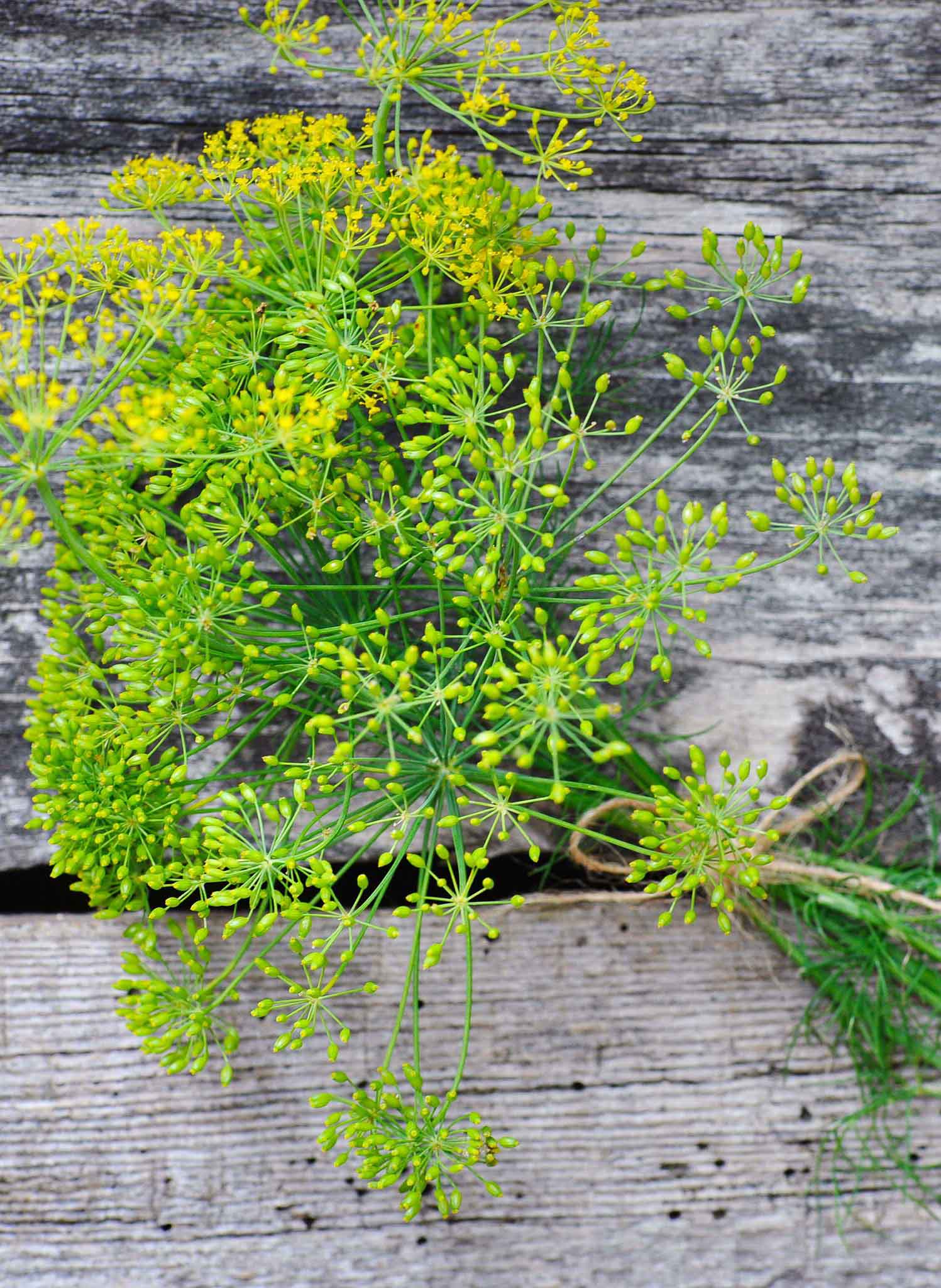
How to Dry Dill
Drying dill is a popular method to preserve its flavor and extend its shelf life.
-
- Harvesting – Choose healthy dill plants with mature leaves. Harvest the dill in the morning when the essential oils are most concentrated.
- Cleaning – Gently wash the dill fronds with cool water to remove dirt or debris. Pat them dry with a clean towel or allow them to air dry.
- Bundling – Gather a small number of dill stems, around 5-10 stems, and secure them with a rubber band or a piece of string. Make sure the stems are aligned at the base.
- Hanging – Hang the dill bundles upside down in a cool, dry, and well-ventilated area. Avoid direct sunlight, which can cause the dill to lose its flavor and color. Allow sufficient air circulation around the bundles to promote drying.
- Drying Process – Leave the dill bundles to dry for approximately 1 to 2 weeks. The drying time may vary depending on environmental conditions, but the dill leaves should become dry, crisp, and brittle to the touch when thoroughly dried.
- Removing Leaves – Once the dill leaves are completely dry, gently remove them from the stems. You can do this by sliding your fingers down the stems, allowing the leaves to separate naturally. Discard any discolored or damaged leaves.
- Storing – Store the dried dill leaves in airtight containers, such as glass jars or resealable bags, to maintain their freshness and prevent moisture absorption. Store the containers in a cool, dark place, away from heat and humidity.
- Usage – Use the dried dill leaves as a seasoning in soups, stews, sauces, and marinades or as a flavorful addition to salads and dressings. Crush or crumble the dried leaves before adding them to recipes to release their full flavor.
Preserving the delightful essence of fresh dill can be achieved through drying and proper storage. To air dry dill, bundle the fresh sprigs together and hang them upside down in a well-ventilated area. Once completely dry, remove the leaves from the stems and store them in an airtight container to retain their flavor. Freezing fresh dill is another option. Chop the leaves and place them in an ice cube tray, filling each compartment with water. Once frozen, transfer the dill cubes to a freezer bag for long-term storage. Whichever method you choose, drying and storing fresh dill allow you to enjoy its unique flavor and aroma even beyond the growing season, adding a dash of freshness to your dishes throughout the year.
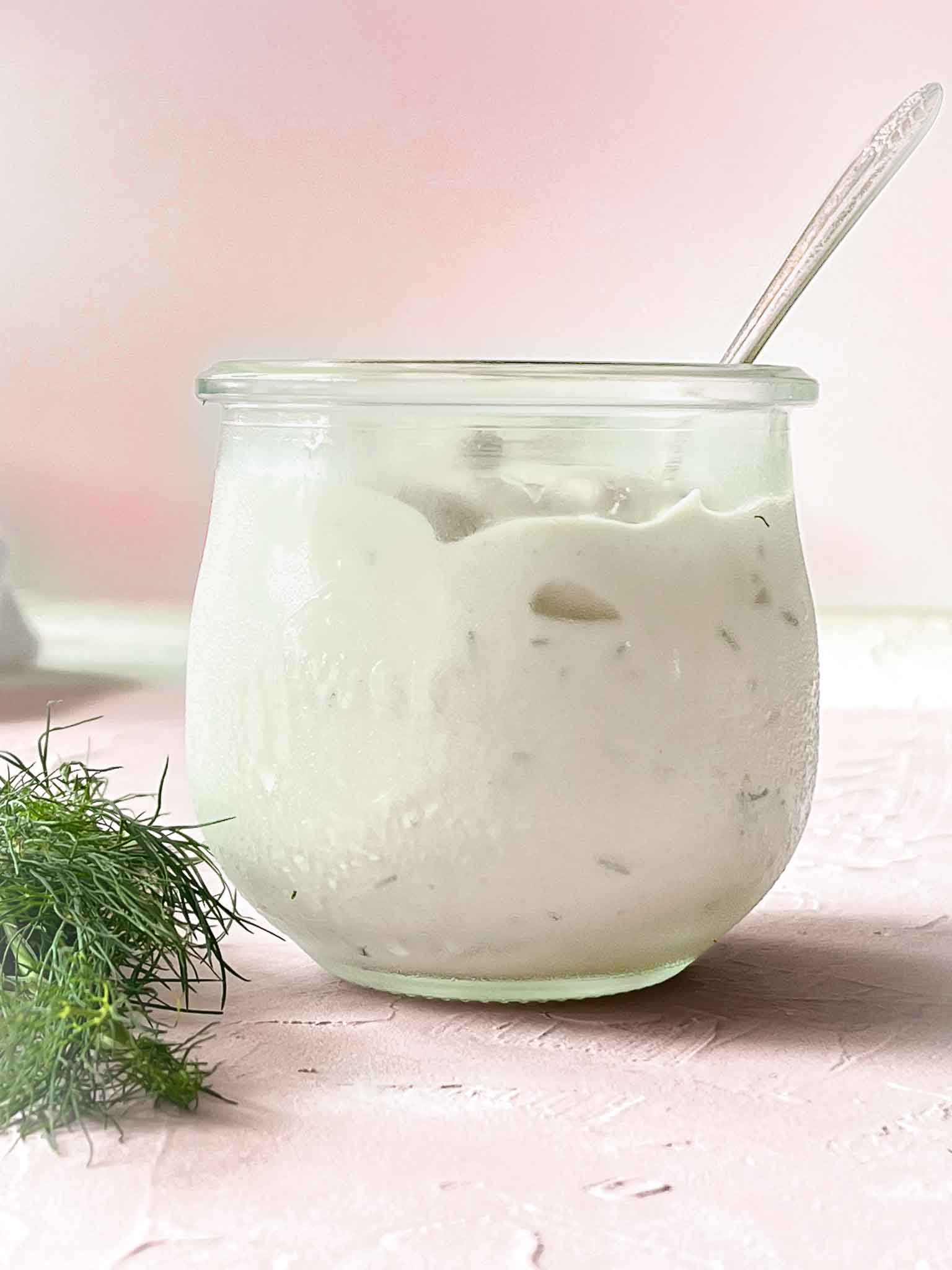
Serving Suggestions for Basil
Simple to prepare and wonderfully delicious!
-
- Chickpea Sandwich with Avocado, Fresh Dill, and Tahini – I make this chickpea, avocado, and fresh dill sandwich on my homemade 5-ingredient vegan bread, which I lightly toast and spread with homemade vegan tahini.
- Grain Bowls – Fresh Dill makes a perfect addition to any grain bowl.
- On Salads – Baby Beet Greens Salad with Romaine and Fresh Garden Veggies. Crisp, crunchy, clean baby beet greens salad with garden-fresh veggies.
- Cashew Cream – Chop up fresh dill and infuse it into our cashew cream. One of my personal favorite dips/dressings and the dill elevates it to a higher flavor profile!
So many recipes use fresh dill! A good place to start is with the recipe below for our Chickpea Sandwich with Avocado, Fresh Dill, and Tahini. If you decide to give it a try let us know in the comments below.
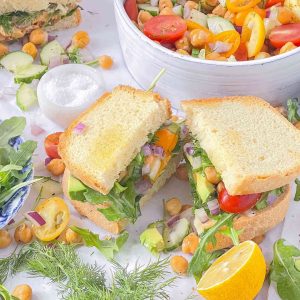
Chickpea Sandwich with Arugula, Avocado, and Tahini Sauce
Ingredients
- 1 loaf vegan loaf bread
- 2 cups chickpea salad
- 1 ripe avocado, evenly sliced
- 1 cup fresh baby arugula
- extra-virgin olive oil, for drizzling
- 1/2 tsp sea salt
- 1/4 tsp freshly ground pepper
Instructions
- Layout ingredients on flat surface - cover with parchment paper
- Cut vegan loaf bread into slices
- Add fresh baby arugula to sandwich
- Scoop in heaping tbsp of chilled chickpea salad
- Place sliced avocado on bread
- Add small scoop of chickpea salad
- Add rough cut fresh dill

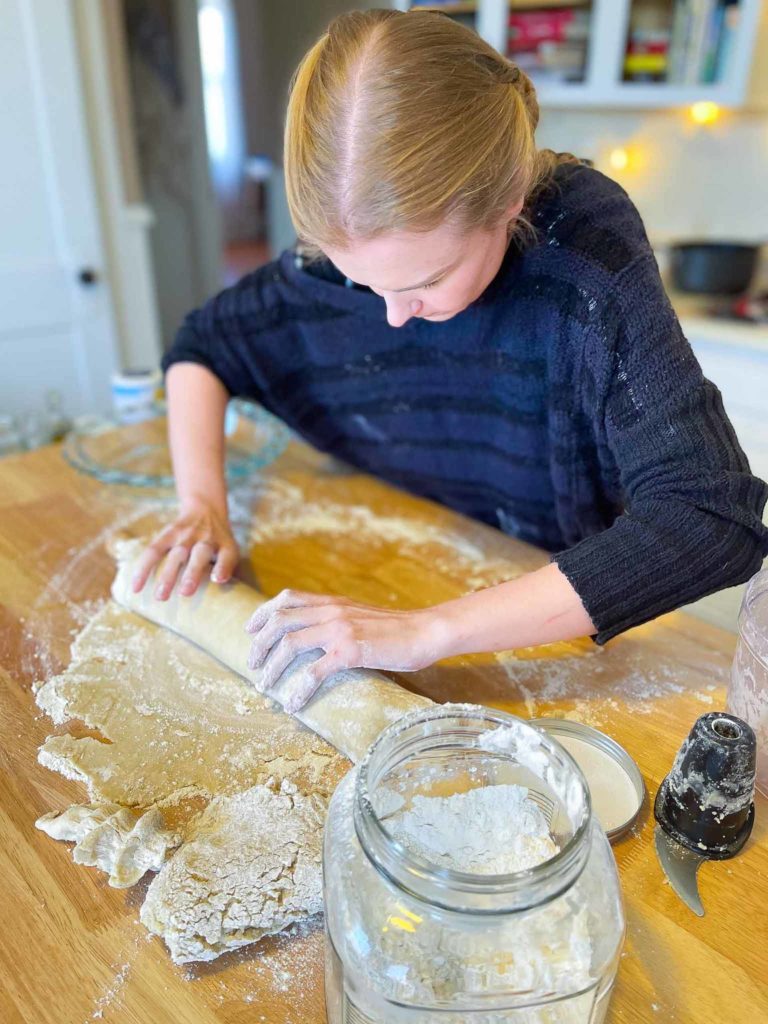
0 Comments